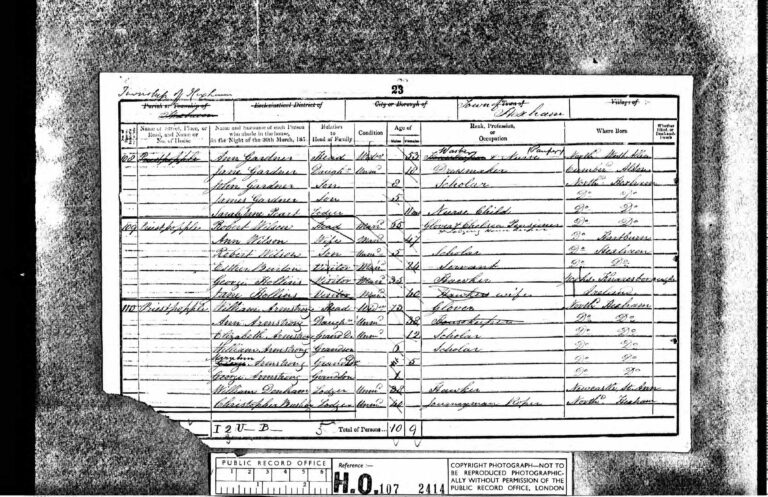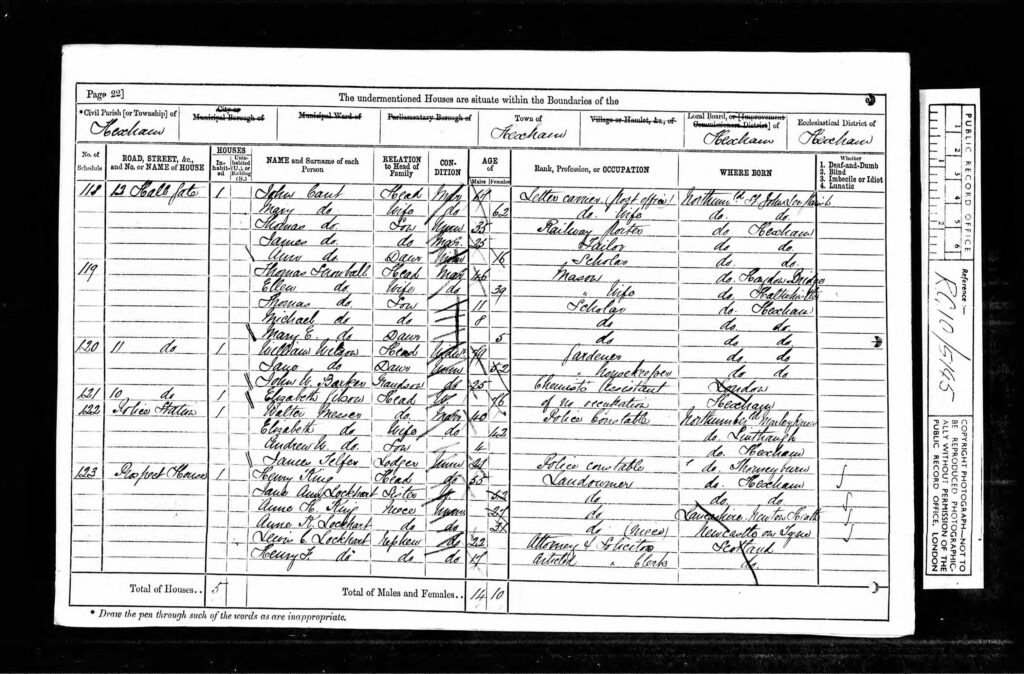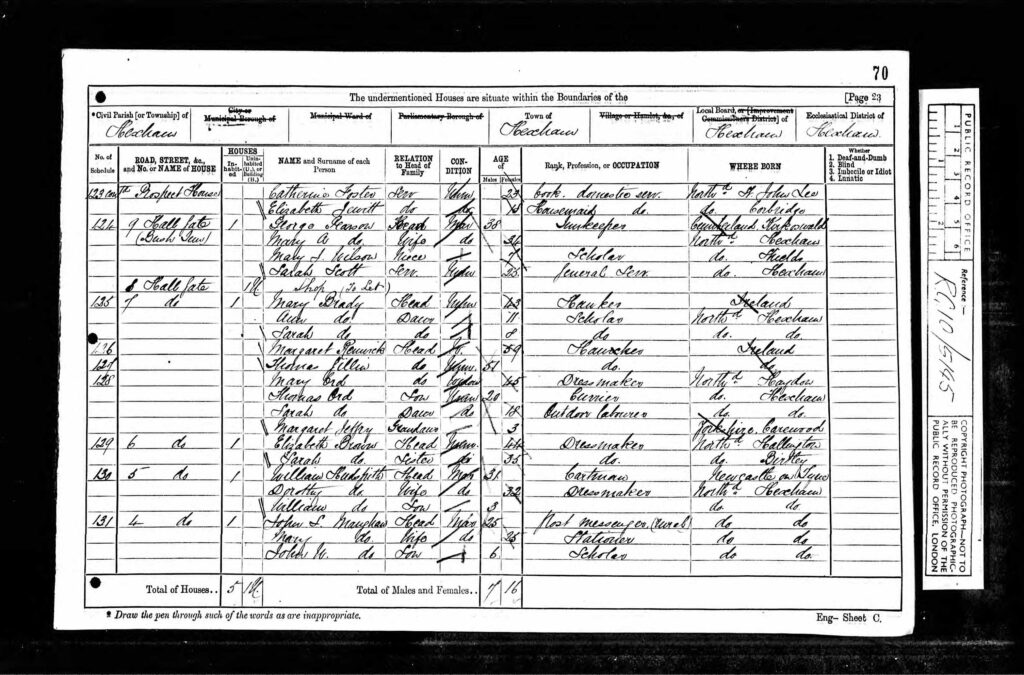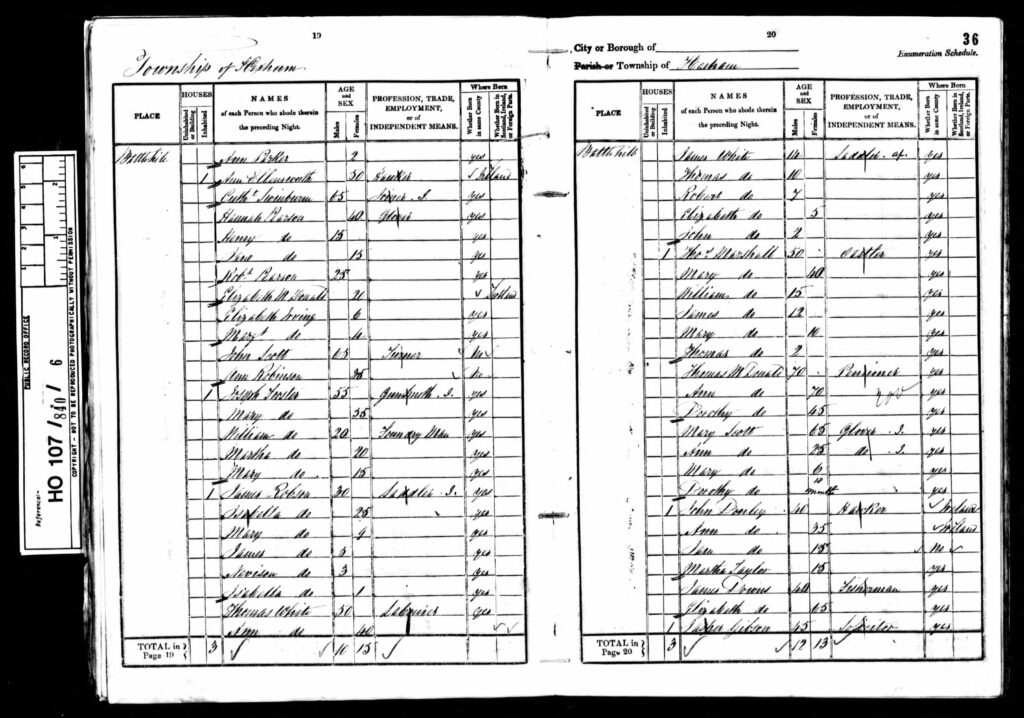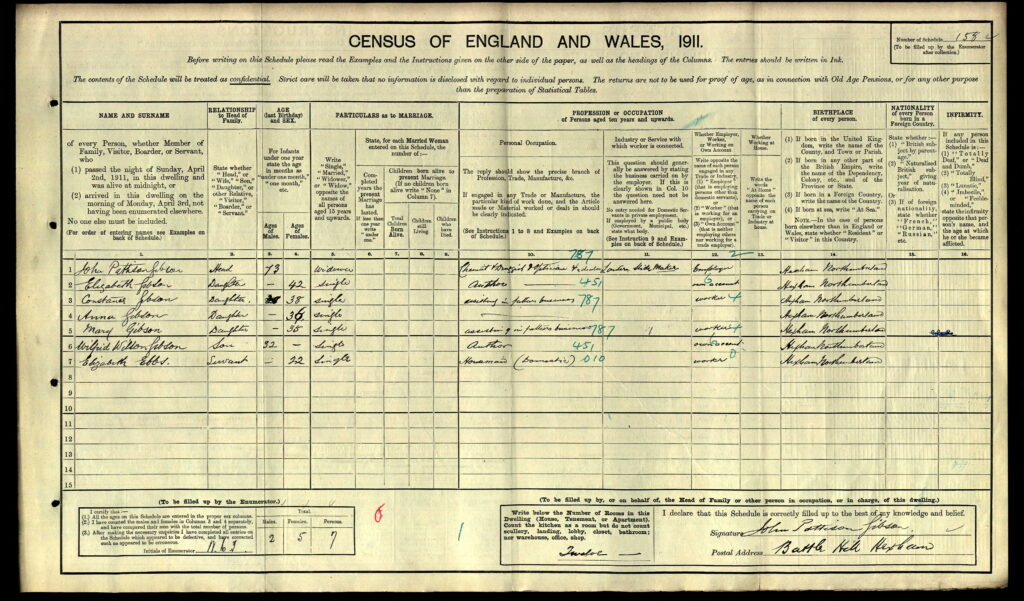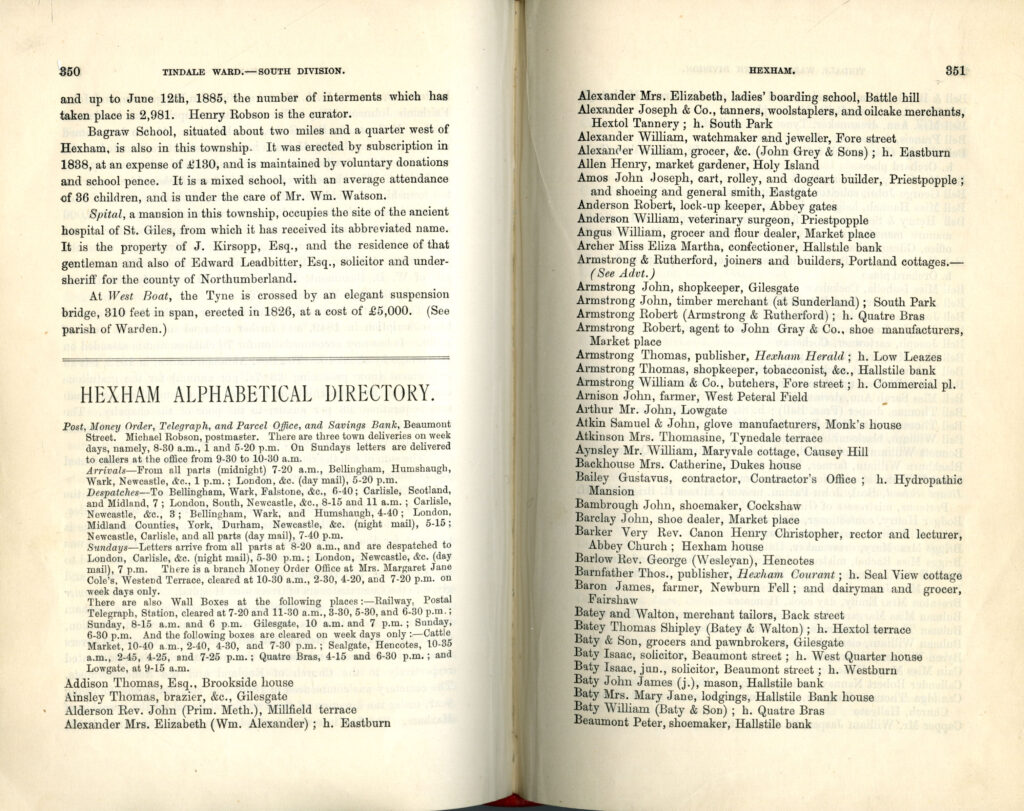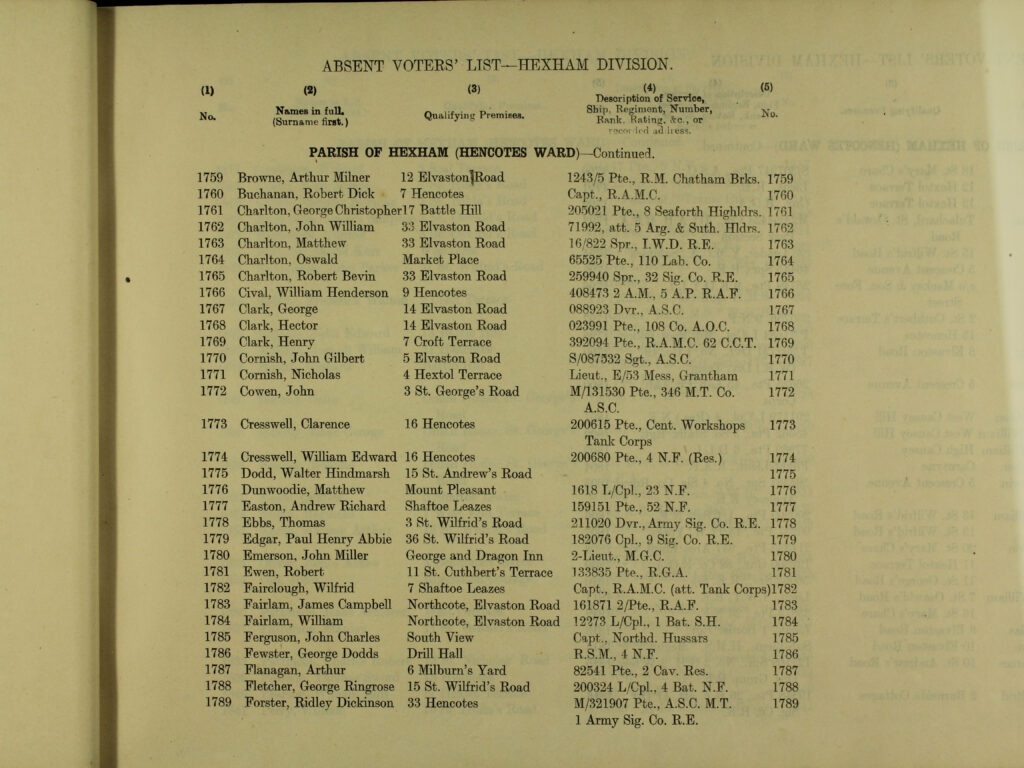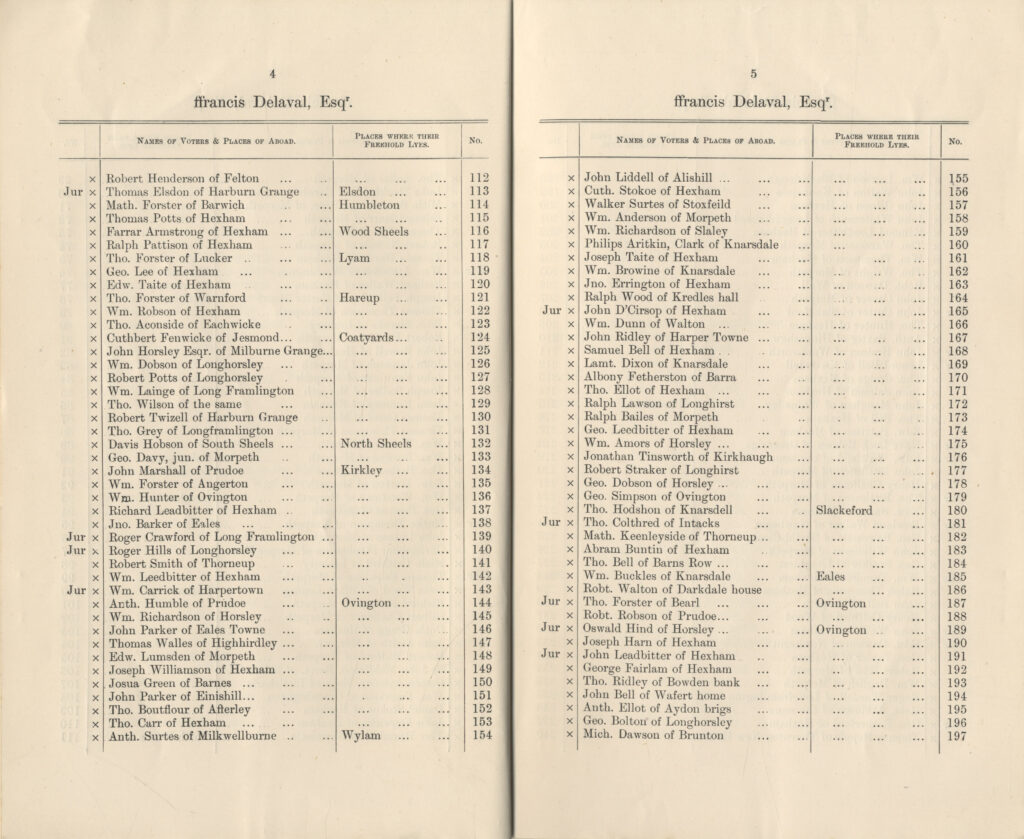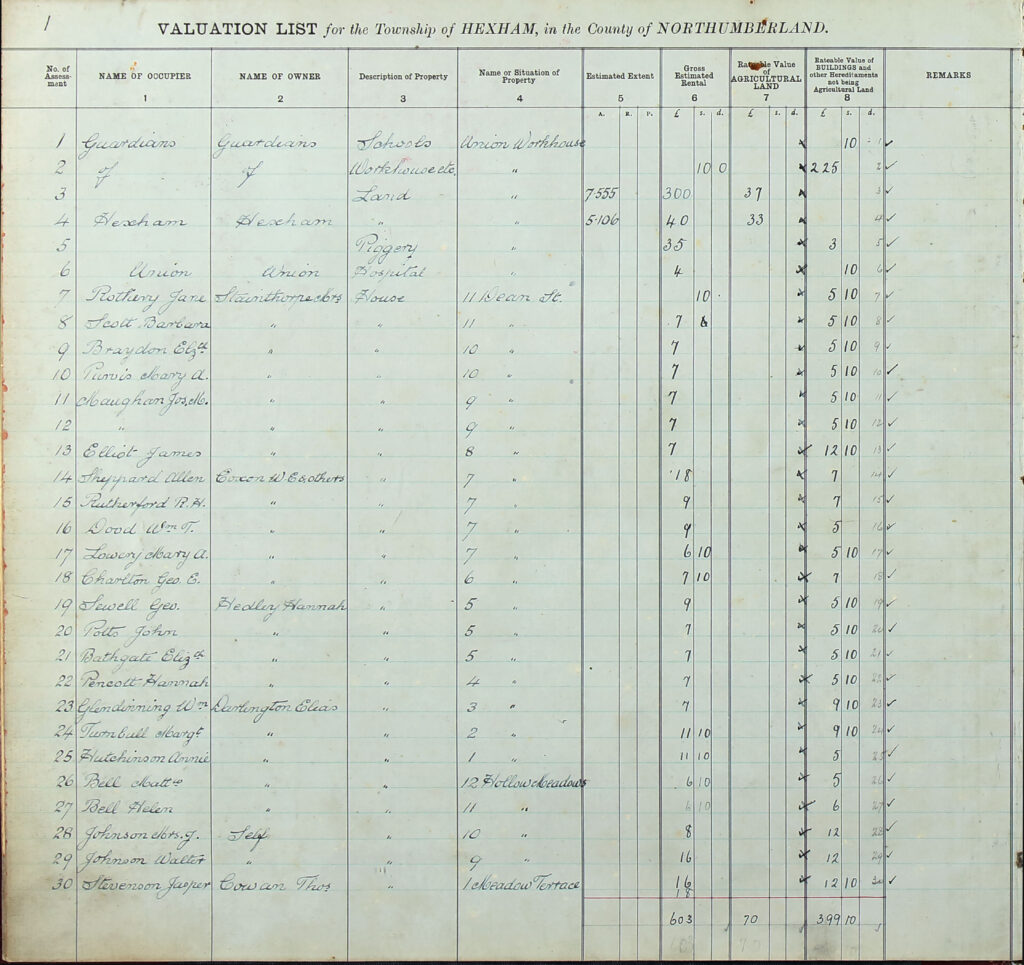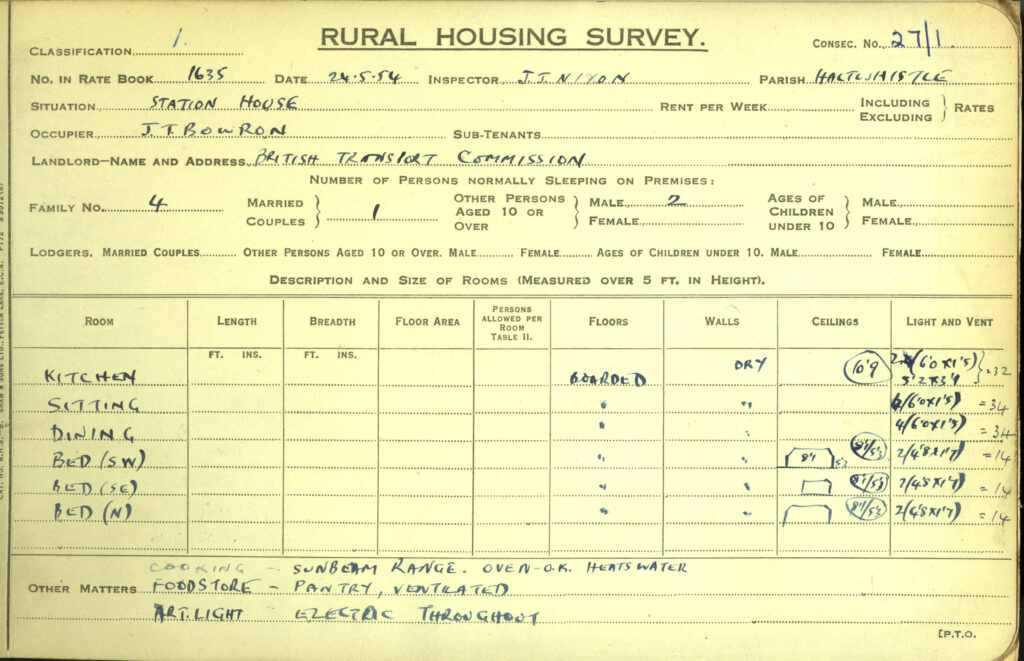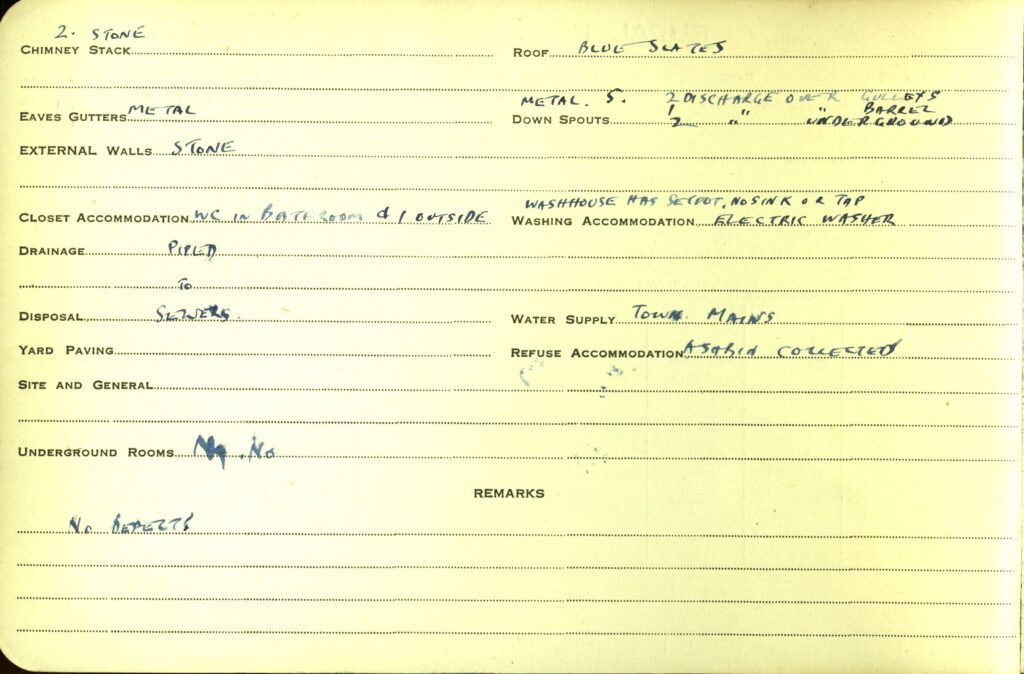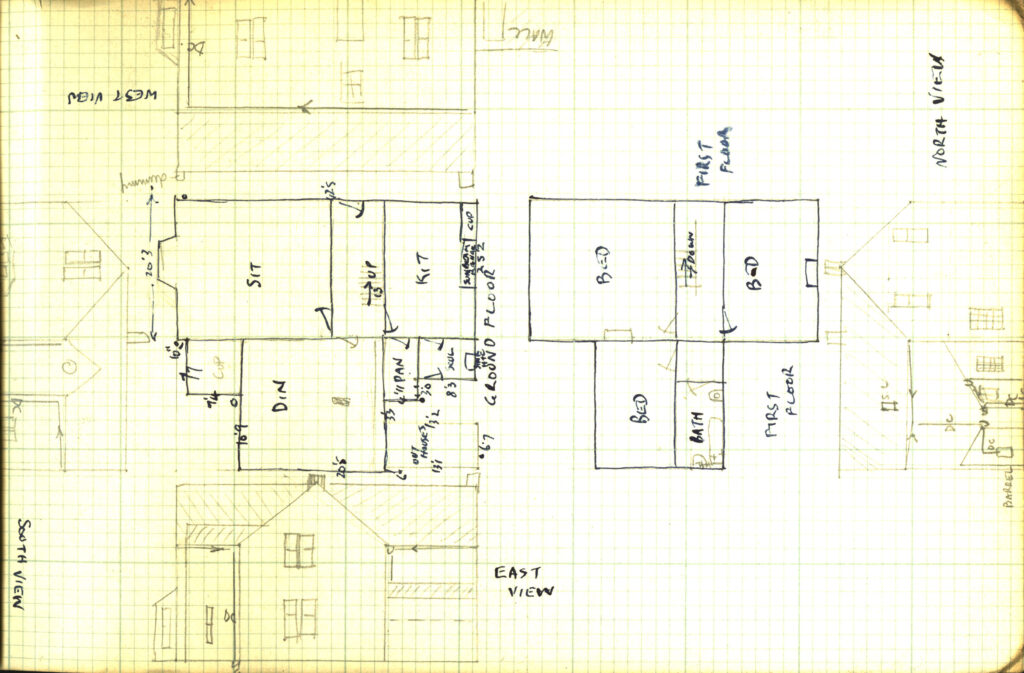RESIDENTS
Another interesting aspect of research is to consider who lived in your property. Until well into the 20th century many properties were tenanted rather than owner-occupied so may be that the person living in the property did not own it.
Chronology of Residents
Try to build up a chronology of who owned and/or occupied the property over the period of its existence. Consider the occupations of those who lived there – this will give an indication of the social status of the area. However, in doing this you need to consider that different occupations had a varying status over time. An example of this would be the occupation of clerk – an occupation that was much more highly valued in the Victorian and early Edwardian period. The term can also be an abbreviated version of clerk in Holy Orders- a clergyman. When looking at occupancy/ownership you might also consider:
- Does the social status of owners/occupiers change over a period of time? If so, is this an indication that an area has become gentrified or has the reverse occurred?
- What was the size of the families that occupied the property?
- Did the family have live-in servants? If so what does this tell us?
- Was there a high occupancy turnover – what might this indicate?
- Do families with a particular occupation dominate the area? What might this indicate?
- Is there evidence of mass migration into the area? What might this indicate?
A combination of the following sources will assist in establishing who has occupied or owned a property at a particular time.
Give it a go
The first image is the 1851 census entry for the McLean family living at Skinnerburn, Hexham.
The second image is the 1851 census page listing two households in Priestpopple, Hexham.
- What can you learn about the McLean family from the first 1851 census image?
- What can you learn about occupations in Hexham from the second 1851 census image?
- In the 1851 census, the McLean family were living at Skinnerburn, Hexham. Head of family Hector aged 28, a hawker, his wife, Ellen aged 30 and their eldest child, John, aged 5, were all born in Ireland.
- Hexham was famed for its glovemaking. Occupations linked with glovemaking were glovers and tanners who prepared the tans (skins) used in glovemaking. This page from the 1851 census lists two households in Priestpopple, Hexham where the heads of the household are glovers.
Answer goes here.
Answer 1
Answer 2
Answer 3
Census Records
The first national census in England & Wales was taken in 1801 & from then on at 10-year intervals with the exception of 1941 when data was not collected because war was in progress. Between 1801-1831 the information is purely statistical. The returns are subject to a 100-year closure period meaning that the most recent records available are those for 1921. Census data was collected on the following dates:
7 June 1841
30 March 1851
7 April 1861
2 April 1871
3 April 1881
5 April 1891.
31 March 1901
2 April 1911
19 June 1921
Original census returns are held at The National Archives in London. Indexed digital copies of English and Welsh census are available on the Ancestry (1841-1911) and FindMyPast (1841-1921). Both are subscription websites but are accessible to view without charge in Northumberland Archives searchrooms and in Northumberland Libraries.
Census returns are useful because they list everyone in residence on census night – not just the head of household as per other sources. As well as family members they list live-in servants and overnight visitors. They record the age and occupation of each resident. All of this information is useful in building up a profile of residents. Look out particularly for parents with children. The birthplaces of the children might provide a clue as to when a family moved into a property.
Points To Note
- Early censuses often don’t provide detailed addresses making it difficult to locate particular properties.
- Sometimes, as in the case of the 1911 census here, property numbers were not recorded.
- The 1841 census provides less information than later ones. Those completing the census were asked if they were both ‘in this county’ – Yes or No. If the person was not born in the county they were asked whether they were born in Scotland (S), Ireland (I) or Foreign Parts (F). Adult ages were rounded down to the nearest fifth year.
- The 1841 census was written in pencil and can be difficult to read.
- Contemporary indexes were created for the censuses as they were made available on the Ancestry and FindMyPast websites. These do contain errors sometimes making it difficult to locate the property that you are researching.
Give it a go
What can you learn from these 1871 census returns?
The 1871 census for Prospect House, Hexham, lists the King/Lockhart families as residents. The head of the household is Henry King, a landowner. Living with him are his sister, Jane Ann Lockhart, and four King/Lockhart nephews and nieces. Prospect House was a substantial property and the household also included two live-in servants.
Answer goes here.
Answer 1
Answer 2
Answer 3
Battle Hill, Hexham: 1841 & 1911 Census
These two images shows the 1841 census for a number of properties in Battle Hill, Hexham. At the bottom of the right hand column of the first page is reference to Jasper Gibson, solicitor. The entry relating to the household continues on to the second page. House numbers are not recorded on these pages.
This image shows the 1911 census for a property in Battle Hill, Hexham, occupied by John Pattison Gibson, chemist, druggist, optician and dealer in lantern slides. JP Gibson was a photographer of international repute. Northumberland Archives holds an extensive collection of Gibson’s photographs and these include many views of Hexham properties (reference NRO 01876). It is working checking our electronic catalogue – Home Page (northumberland.gov.uk) – for reference to photographs that might show the property that you are researching.
Directories
Printed directories were produced from the 18th century for large settlements such as London and Newcastle. They were produced more widely in the 19th century with countywide directories being produced. They continued to be produced until the 1960s. They take two forms – trade directories that list businesses and tradespeople and ‘important’ residents of the town – and street directories that list the residents of each property in the street. A couple of points to be aware of:
- Unskilled persons were generally not listed until the 20th century – if therefore the property that you are researching was, for example, a labourer’s cottage you may not find reference to it.
- There may be discrepancies between the date that the information was collated and the date of publication. This means that a resident may have moved on from the property by the time of publication.
- Trade directories list business addresses and often denote residential addresses where different. The abbreviations h and r are used to denote home and residential addresses.
The above image is a page from T. Bulmer’s Directory of Northumberland of 1887. Businesses and tradespeople are listed in alphabetical order. In some cases, both business and residential addresses are recorded.
Northumberland Archives and Hexham Library both hold extensive collections of printed directories. Some Northumberland directories are available online at:
Historical directories | Archives and Special Collections | University of Leicester
Electoral Registers
Electoral registers commenced in 1832 after the passage of The Reform Act and the subsequent change in the franchise. Almost all electoral registers survive from 1832 to the present day. It is therefore, in theory at least, possible to trace the occupancy of a property from 1832. However, it is important to remember that until the early 20th century there was a limited franchise and the occupants of your property may not have been eligible to vote.
- In 1832 about 1 man in 7 was able to vote in Parliamentary elections.
- By 1867 about 1 man in 3 was able to vote in Parliamentary elections. This included most working men in towns and cities but excluded rural labourers.
- By 1884 about 2 men in 3 were able to vote in Parliamentary elections. This now included rural labourers. Still excluded were heads of households who shared houses; adult males living with parents and soldiers in barracks.
- By 1918 all males over the age of 21 (residents or owners) and women over 30 who were householders or wives of householders – 6 women in 10 – were able to vote in Parliamentary elections.
- By 1928 all residents over the age of 21 were able to vote in Parliamentary elections.
- By 1969 all residents over the age of 18 were eligible to vote in Parliamentary elections.
Very few Northumberland electoral registers are currently available to view on the internet. Original registers are available to view in our searchrooms. Adopt a strategy for looking through the registers – commence by looking at say every 5th year and note any changes in occupancy, then back track to discover exactly when occupancy changed. Remember to check the date that information was submitted – it may be a year previous to the date on the register.
Absent Voters’ Lists
During the World Wars Absent Voters’ Lists were compiled recording details of voters who were absent from home on military service. Home address is recorded as well as details of service and service numbers.
Although women could not vote in Parliamentary elections until 1918 they were able to vote in municipal elections prior to 1918. The 1869 Municipal Franchise Act gave single women ratepayers the right to vote in local elections. It is worth checking to see if any electoral registers survive for municipal elections.
Poll Books
Poll books listed voters in the period prior to 1832. The franchise in this period was very limited – approximately 1 man in 10 was eligible to vote. An act of 1696 decreed that poll books should be published showing how each elector had voted in an effort to avoid electoral fraud. Information provided can vary – the name of the elector and details of how he voted were always given. Sometimes an address and occupation are also provided. Because the franchise was limited it tends to be the more wealthy members of society that are referred to. However, freemen, who often had trades, did have the right to vote. Poll books should also provide a clue as to other properties owned by the person owning the property that is being researched. If the owner is not resident in the property referred to his residential address is given.
Parish Registers
Parish baptism and burial registers should record place of residence from 1812 (and in some instances previously). It may therefore be possible to use church registers to locate details of occupancy over a period of time. This is probably more helpful in rural areas that were not heavily populated. Church registers, other than very modern ones, are generally held by Northumberland Archives. They are not available online. Bishop’s Transcripts (contemporary copies) of some registers for the Diocese of Durham (including Northumberland) are available to view free of charge on the FamilySearch website – FamilySearch • Free Family Trees and Genealogy Archives.
Church Rate Books
From 1555 churches were able to raise rates – initially to support the fabric of the church and later to support the poor of the parish and public facilities such as highways. All parishioners were eligible to pay rates although some were exempt because of poverty. Some rate books list those exempt for reasons of poverty. Assessment was based upon the value of property Rate books can be used to establish the size of property occupied, to discover length of tenure within a parish or even a property. Look out also for lists of persons who were in arrears exempt or perhaps because they were non-conformists. It is highly unlikely that you will be able to trace an unbroken sequence of records but if you are lucky, you may be able to find a sequence of books that will allow you to trace ownership over a number of years. Several 19th century church rate books survive for the parish of Hexham. These are not available online but can be consulted in the searchroom at Woodhorn.
Local Authority Rate Books
In theory you should find annual rating records from the date of commencement of a local authority right through to the recent times. In reality, because of their bulk many have been destroyed. Where they do survive, try looking at sample years to establish details of ownership/occupancy. Hexham Urban District Council records include 21 volumes of valuation lists (rate books) covering the period 1896-1972 (with gaps).
Other Local Authority Records
Consider looking through lists of local authority records for other sources that might refer to former residents of your property. For example, Haltwhistle Rural District Council records include details of a survey of rural housing that took place after World War Two.
One particular item to look out for is a survey of rural housing undertaken after WW2. This provides the names of the owner and/occupier, the dimensions of individual rooms and information about the physical state of the building and sanitary conditions.
Other Records
Other records to consider when researching former residents include:
- Wills
- Taxation records such as Hearth Tax and Window Tax
- Maps and plans such as Tithe maps and the 1910 Land Valuation


